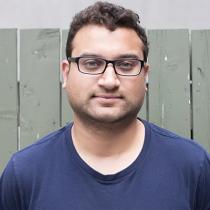Should the Devils and Kings abandon their two-timeline approach?
The Devils and Kings are poised to be good both now and in the future, but is their team-building approach holding them back?
There are few certainties in life, even fewer in professional hockey, and two NHL contenders may be forced to reckon with their mortality, weighing their distant accomplishments against a bright, unrealized future in pursuit of a Stanley Cup.
For the better part of four decades, the NHL has quietly taken concepts from the NBA and incorporated them into its existing infrastructure. Load management is broadly applied to star players after Kawhi Leonard widely popularized the concept five years ago, and now at least two leading NHL teams may have to consider abandoning their "two-timeline approach."
The Golden State Warriors recently applied that approach, the idea that they could win a championship with their veteran core of Steph Curry, Draymond Green and Klay Thompson, while also trying to develop top prospects Jonathan Kuminga and Moses Moody in real-time. It worked to great effect in 2022 as the Warriors won their fourth title of the 21st century, but it eventually faltered in 2023 with the veterans and the young players failing to align on and off the court.
Should the New Jersey Devils and Los Angeles Kings abandon their two-timeline approaches? Both clubs have drafted exceptionally well in recent years, stockpiling deep prospect pools while maintaining rosters that are ready to win now.
New Jersey may be the most exciting team on the ice, playing at a hyper-speed pace perhaps only matched by the Colorado Avalanche. Jack Hughes and Nico Hischier have more than delivered on their first-overall pick pedigree, the former emerging as a Hart Trophy candidate, the latter developing into an elite two-way menace.
Hughes, Hischier, Jesper Bratt and Timo Meier are part of New Jersey’s under-27 core, all signed through 2026-27, priming the team for Stanley Cup contention this season and beyond after a second-round playoff exit last year. Ondrej Palat and Tyler Toffoli provide veteran Cup-winning experience and it won’t be a surprise if the Devils are the last ones standing next summer.
Knowing there are few certainties, should the Devils try to aggressively leverage their deep prospect cohort in search of a top-caliber goaltender, the team’s lone and glaring weakness? New Jersey will not trade Luke Hughes — Jack’s brother, a 20-year-old defenseman with star potential — but every other prospect should be up for grabs in pursuit of Connor Hellebuyck, who may be growing discontent with the stalled progress in Winnipeg.
The Athletic’s Scott Wheeler rated New Jersey’s prospect pool second only to Minnesota in January. A month later, the Devils avoided trading any real players of consequence in order to acquire Meier from the Sharks at the trade deadline. It’s time for Devils general manager Tom Fitzgerald to get extremely aggressive.
Why shouldn’t the Devils dangle Alexander Holtz, Seamus Casey, Akira Schmid (who will get starts this year but isn’t the long-term answer in net) and their current array of first-round picks in order to secure a star goalie like Hellebuyck or a top-flight defenseman at the deadline? New Jersey’s core is ready to win now and its top players will all develop together in a similar fashion to the Tampa Bay Lightning dynasty that is finally beginning to show signs of age.
As for the Kings, it’s a slightly different equation. Drew Doughty and Anze Kopitar are the last remnants of the 2012 and 2014 title-winning teams. Doughty put together his best offensive campaign in five seasons in 2022-23, receiving some light down-ballot Norris Trophy consideration, while Kopitar captured the Lady Byng Trophy and finished fifth in Selke Trophy voting for best defensive forward. Both players are clearly capable of star-caliber output, but again, life has few certainties and the Kings may want to push towards the future rather than waiting for their two pillars to decline sharply.
Kopitar is signed through 2025-26 before he’ll likely have to evaluate whether he wants to keep playing, while Doughty is on the books through 2026-27 at $11 million per year, a prohibitive figure when considering his real trade value. Pierre-Luc Dubois, Kevin Fiala and Mikey Anderson form an under-28 group that is under contract through the 2028-29 season and it may make more sense for the Kings to maximize that group’s window of contention if they can swing big trades around their headlining veterans.
Los Angeles has drafted exceptionally well in the last few years, with an array of top picks to boast. Quinton Byfield, Arthur Kaliyev and Brandt Clarke are all ready for expanded roles this season and the Kings have already started divesting from their No. 7-ranked prospect group.
Dubois was acquired this summer in exchange for Gabriel Vilardi, Alex Iafallo and Rasmus Kupari, players who did not live up to the sum of their potential in Los Angeles. It displayed an aggressiveness from Kings general manager Rob Blake that we’d like to see league-wide, as the 25-year-old Dubois matches the current timeline and isn’t too old to align with a youth-oriented Kings team, either.
Does a two-timeline approach work for the Devils and the Kings? Both teams, as currently constructed, are well-equipped for deep playoff runs while their core forwards are firmly in the primes of their careers. It may be in the Devils and Kings’ best interests to merge their timelines as best as they can.
Nothing is promised, but both of these teams have the potential to disrupt the league with blockbuster trades while genuinely striving towards the Stanley Cup.



